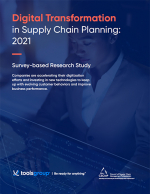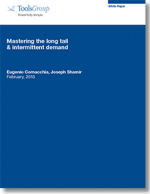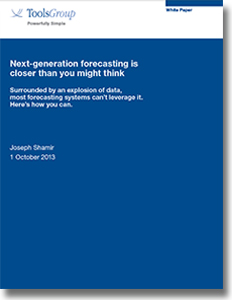Next-Generation Forecasting Is Closer Than You Might Think
Surrounded by an explosion of data, most forecasting systems can’t leverage it - here’s how you can.
Surrounded by an explosion of data, most forecasting systems have no way to leverage or take advantage of it.
Businesses complexity is growing, driven by multi-channel marketing, the growing influence of Demand Shaping (Media, Promotions, NPI), and the impact of the internet on buying behavior - to name a few.
To manage and ultimately profit from this complexity, marketing and sales departments are investing in modern data infrastructures to unlock valuable clues to customer sentiment and behavior, even including technologies such as machine-embedded telemetry and social media channels.
Unfortunately most companies’ supply chain systems and processes haven’t begun to catch up. Most are still using forecasting approaches based on cumbersome algorithms and time series of aggregated sales history. This inability to integrate, analyze and take advantage of increasingly available data is causing forecast accuracy to get worse when it could be getting better.
We see companies with Item-Location forecast accuracy (MAPE) of 70 percent or even less. Analysis from Lora Cecere of Supply Chain Insights shows that food manufacturing companies have “…lost 1% in operating margin and have increased average inventories by 22% over the last decade”.
The good news is that most companies already have the data they need to achieve big improvements in forecast accuracy. Those wanting to move to the ‘next generation’ of forecasting to achieve greater demand and supply reliability have readily available data and powerful tools at their disposal.
The Road to ‘Next-Generation’ Forecasting
The goal for forward-thinking supply chain executives is to get to a market-driven forecast. Historical demand is a valuable proxy for future demand, but to forecast demand that is heavily influenced by marketing initiatives, you have to model the marketing-related data that “shapes” the demand. It allows us to capture and model the relevant market attributes that impact the demand signal, generating more signal and less noise.
This additional information improves the forecast, inventory and service levels.
What’s Related




Favorites





